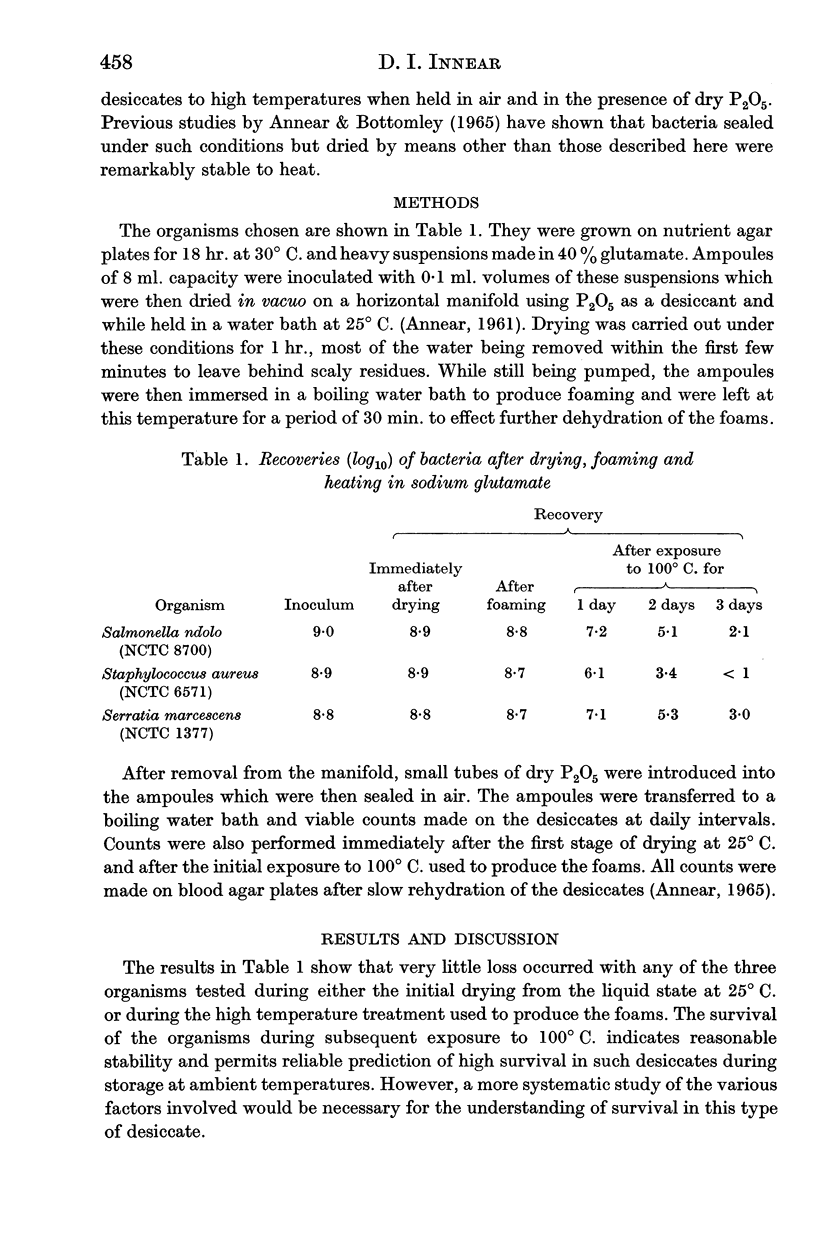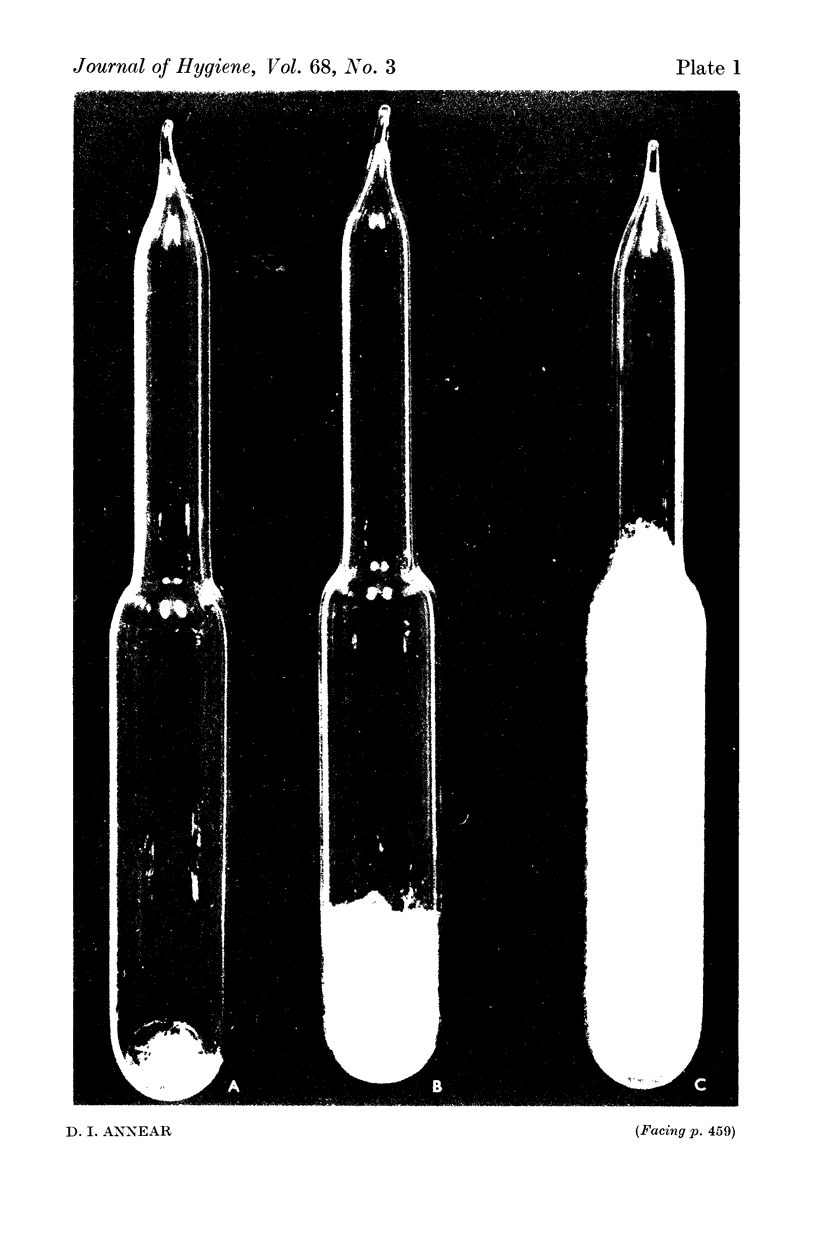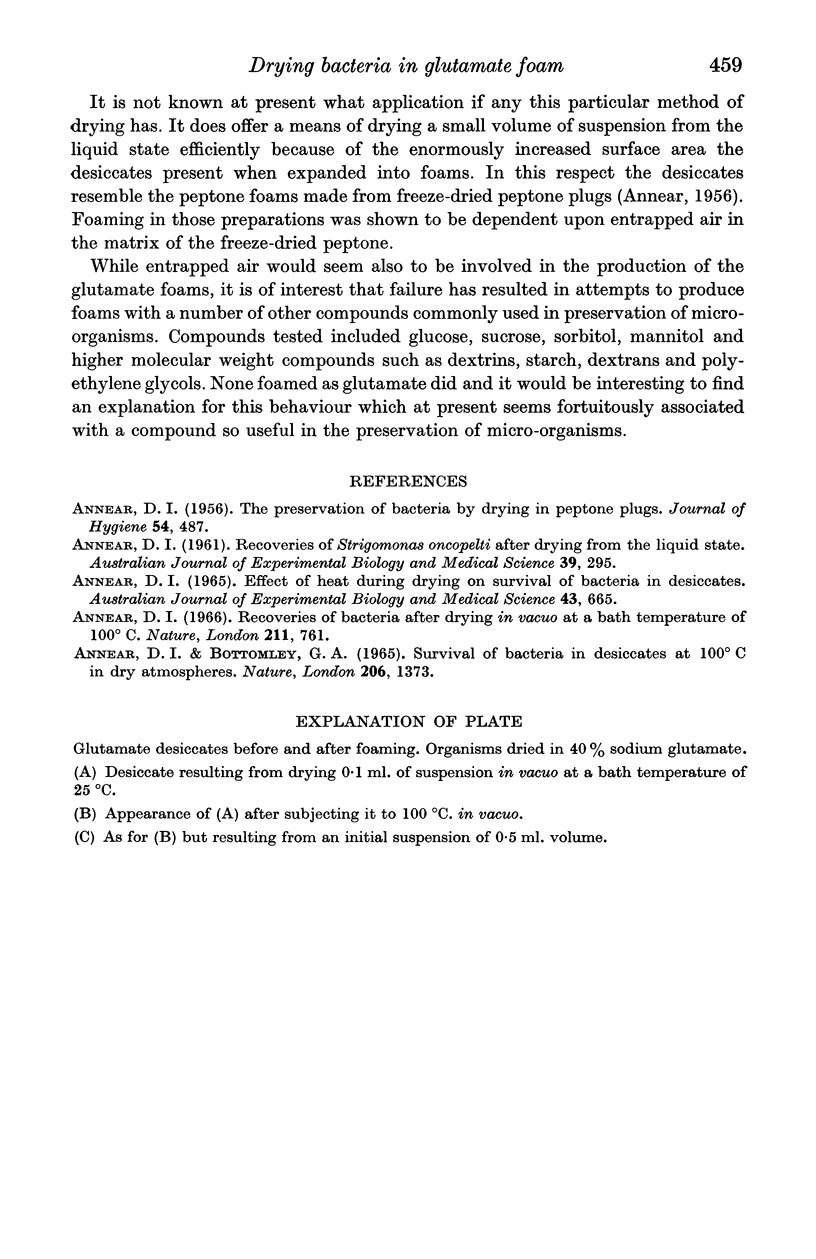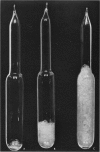Abstract
A method of drying bacteria is described, in which the bacterial suspension was made in 40% sodium glutamate, and 0·1 ml. volumes of this in 8 ml. ampoules were dried in vacuo while being held in a water bath at 25° C. After 1 hr. with the pump still running, the ampoules were immersed in water at 100° C. The partly dried suspension expanded rapidly into a homogeneous white foam. After 30 min. the ampoules were taken off the manifold; small tubes containing dry P2O5 were inserted in the ampoules which were then sealed in air. Preliminary results with three organisms, Salmonella ndolo, Staphylococcus aureus and Serratia marcescens showed high survivals immediately after the `foaming' period, and good stability after 1 or 2 days at 100° C.
Full text
PDF



Images in this article
Selected References
These references are in PubMed. This may not be the complete list of references from this article.
- ANNEAR D. I. Recovery of Strigomonas oncopelti after drying from the liquid state. Aust J Exp Biol Med Sci. 1961 Jun;39:295–303. doi: 10.1038/icb.1961.29. [DOI] [PubMed] [Google Scholar]
- ANNEAR D. I. The preservation of bacteria by drying in peptone plugs. J Hyg (Lond) 1956 Dec;54(4):487–508. doi: 10.1017/s0022172400044776. [DOI] [PMC free article] [PubMed] [Google Scholar]
- Annear D. I., Bottomley G. A. Survival of bacteria in desiccates at 100 degrees C in dry atmospheres. Nature. 1965 Jun 26;206(991):1373–1374. doi: 10.1038/2061373a0. [DOI] [PubMed] [Google Scholar]
- Annear D. I. Effect of heat during drying on survival of bacteria in desiccates. Aust J Exp Biol Med Sci. 1965 Oct;43(5):665–670. doi: 10.1038/icb.1965.50. [DOI] [PubMed] [Google Scholar]
- Annear D. I. Recoveries of bacteria after drying in vacuo at a bath temperature of 100 degrees C. Nature. 1966 Aug 13;211(5050):761–761. doi: 10.1038/211761a0. [DOI] [PubMed] [Google Scholar]



